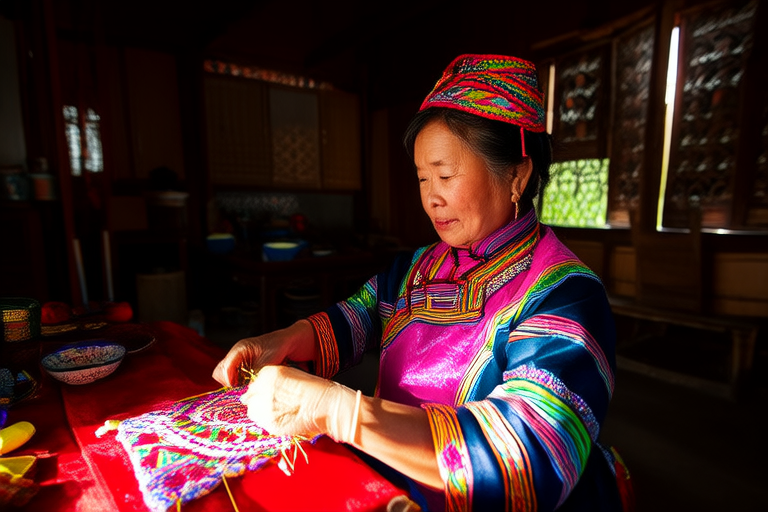Unveiling Traditions: A Journey Through Cultural Customs

Unveiling Traditions: A Journey Through Cultural Customs
Traveling is more than just visiting new places; it is an opportunity to immerse oneself in the rich tapestry of human experience. At the heart of every destination lies its cultural traditions—time-honored practices that reflect the values, history, and identity of its people. Understanding these customs not only enriches our travel experiences but also fosters a deeper connection with the communities we encounter. As global citizens, we have the privilege and responsibility to approach cultural traditions with curiosity and respect. This article invites you on a journey through the vibrant world of cultural customs, exploring how local festivals, rituals, and heritage preservation shape our understanding of humanity.
Exploring Local Festivals
Festivals are the heartbeat of any culture, pulsating with stories of the past and expressions of communal joy. These celebrations provide travelers with a unique window into the soul of a community, revealing its values, beliefs, and shared history. Whether it’s the dazzling lights of Diwali in India, the exuberant parades of Carnival in Brazil, or the serene lantern releases of Yi Peng in Thailand, each festival carries layers of meaning that go beyond surface-level spectacle.
Participating in local festivals allows travelers to witness firsthand how communities come together to honor their ancestors, celebrate seasonal changes, or express gratitude for life’s blessings. For instance, Japan’s Obon Festival is a time when families gather to pay respects to their departed loved ones, showcasing the importance of familial bonds and ancestral reverence in Japanese culture. Similarly, Mexico’s Día de los Muertos transforms mourning into celebration, blending indigenous traditions with Catholic influences to create a vibrant tribute to life and death.
By engaging with these events, travelers gain insights that no guidebook can offer. They learn about the resilience of cultures that have preserved their traditions despite modernization, colonization, or adversity. Moreover, festivals often serve as platforms for storytelling, music, dance, and art, allowing visitors to experience the creative spirit of a place. Such immersive encounters leave lasting impressions, reminding us of the universal human desire to connect, celebrate, and find meaning in life.
Rituals and Etiquette
Beyond grand celebrations, everyday customs and rituals form the backbone of cultural identity. These seemingly small gestures—how people greet one another, share meals, or conduct ceremonies—are profound expressions of societal norms and values. For travelers, understanding and respecting these nuances is key to building meaningful connections and avoiding unintentional offense.
In many Asian cultures, for example, bowing is a deeply ingrained practice symbolizing respect and humility. The depth and duration of the bow vary depending on the context, underscoring the importance of hierarchy and social relationships. In contrast, Mediterranean cultures often prioritize physical touch, such as handshakes, hugs, or cheek kisses, as a way of conveying warmth and familiarity. Recognizing these differences helps travelers navigate social interactions with grace and sensitivity.
Dining etiquette offers another fascinating glimpse into cultural values. In Ethiopia, sharing food from a communal plate is a sign of trust and camaraderie, while in France, savoring each course slowly reflects a deep appreciation for culinary artistry. Meanwhile, removing shoes before entering homes is a common practice in countries like Japan and Turkey, highlighting the value placed on cleanliness and hospitality.
These rituals remind us that cultural customs are not merely formalities but reflections of collective wisdom passed down through generations. By observing and adapting to local etiquette, travelers demonstrate respect for the host culture and open doors to authentic experiences. This mutual exchange fosters goodwill and bridges gaps between diverse ways of life, proving that even the smallest acts can have significant impact.
Preserving Heritage
While cultural traditions enrich our lives, they are also fragile treasures at risk of fading away due to globalization, urbanization, and environmental challenges. As travelers, we play a vital role in safeguarding intangible cultural heritage—the songs, dances, crafts, languages, and rituals that define a community’s identity. Responsible tourism involves not only appreciating these traditions but actively supporting efforts to preserve them for future generations.
One way to contribute is by seeking out authentic, locally-led experiences rather than mass-produced tourist attractions. Visiting artisan workshops, attending traditional performances, or participating in guided cultural tours led by community members ensures that economic benefits flow directly to those who keep these traditions alive. For example, purchasing handmade textiles from indigenous weavers in Peru supports both their livelihoods and the continuation of ancient weaving techniques.
Additionally, travelers should educate themselves about the ethical implications of their actions. Taking photographs during sacred ceremonies without permission, wearing culturally significant attire out of context, or exploiting vulnerable communities for entertainment can perpetuate harm and erode cultural integrity. Instead, approaching traditions with humility and mindfulness honors their sanctity and preserves their authenticity.
International organizations like UNESCO recognize the urgency of protecting intangible cultural heritage and work tirelessly to document and promote endangered practices worldwide. Travelers can amplify these efforts by advocating for sustainable tourism policies, spreading awareness about threatened traditions, and supporting grassroots initiatives aimed at cultural preservation. Every effort counts in ensuring that the world’s diverse heritage remains vibrant and accessible.
Conclusion
Cultural traditions are the threads that weave humanity together, binding us across time and geography. Through local festivals, rituals, and heritage preservation, we uncover the beauty and complexity of the world’s diverse cultures. Each custom tells a story—a testament to the creativity, resilience, and spirit of the people who cherish it.
As travelers, we hold the power to honor and protect these traditions while enriching our own lives through cross-cultural understanding. Let us embrace cultural diversity with open hearts and minds, recognizing that every interaction is an opportunity to learn, grow, and celebrate our shared humanity. Whether dancing under starlit skies at a village festival, exchanging warm greetings with strangers, or supporting artisans preserving age-old crafts, we become part of something greater than ourselves. So, the next time you embark on a journey, remember: unveiling traditions is not just about seeing the world—it’s about connecting with it.